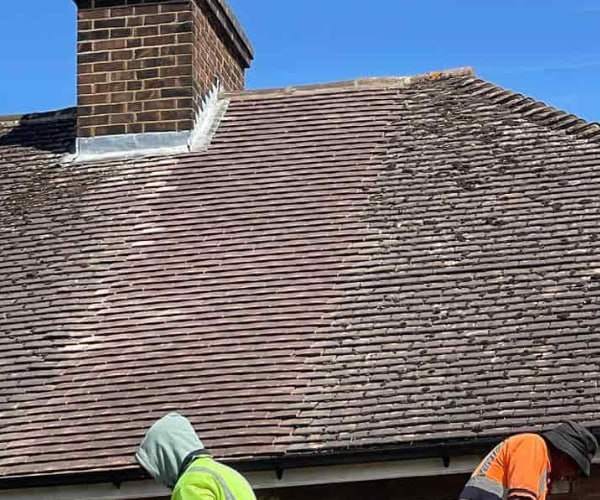Understanding the Different Roof Tile Profiles and Slipped Tile Risks
Introduction: Roof tiles come in various profiles with unique designs and characteristics. While these profiles add character and aesthetics to your home, they can also influence the risk of slipped tiles. In this blog post, we’ll explore different roof tile profiles and how they can impact the potential for slipped tiles. Understanding these profiles is essential for maintaining the integrity of your roof. WDF Roofing St Neots is here to guide you through the intricacies of your roof’s design and help you prevent slipped tile issues.
Different Roof Tile Profiles
- Flat Tiles: Flat tiles are the most common type of roof tiles known for their simplicity and clean lines. They are typically rectangular or square and lay flat against the roof.
- S-shaped Tiles: S-shaped tiles, also known as S-tiles or Spanish tiles, have a distinctive wavy or curved profile. They interlock with adjacent tiles to create a visually appealing pattern.
- Roman Tiles: Roman tiles are semi-cylindrical in shape and overlap to create a continuous curve. They are often used in Mediterranean-style roofing.
- Pantiles: Pantiles have an S-shaped profile but with a double curve. They are commonly used in regions with a Mediterranean or European architectural influence.
- Interlocking Tiles: Interlocking tiles have a unique design that allows them to interlock vertically and horizontally, providing added stability and protection against wind and rain.
Slipped Tile Risks
The risk of slipped tiles can vary depending on the tile profile:
- Flat Tiles: Flat tiles are relatively stable and have a lower risk of slipping. Proper installation and maintenance are essential to prevent any issues.
- S-shaped Tiles: S-shaped tiles provide some stability due to their interlocking design, but strong winds can still dislodge them if not properly secured.
- Roman Tiles: Roman tiles may slip, especially if not adequately fastened. Proper installation is crucial for their stability.
- Pantiles: Pantiles can be susceptible to slipping, particularly in windy conditions. Adequate fastening and maintenance are essential to prevent this.
- Interlocking Tiles: Interlocking tiles have a lower risk of slipping due to their design, which provides better stability and resistance to wind and weather.
Preventing Slipped Tiles
To prevent slipped tiles, consider the following:
- Professional Installation: Ensure your roofing tiles are installed by experienced professionals familiar with the tile profile’s specific requirements.
- Regular Inspections: Schedule regular roof inspections to promptly identify and address slipped tiles or other roofing issues.
- Maintenance: Proper maintenance, including checking for loose or damaged tiles, is essential to prevent slipped tiles and maintain the overall integrity of your roof.
Conclusion: Homeowners must understand the different roof tile profiles and their associated risks of slipped tiles. Whether you have flat tiles, S-shaped tiles, Roman tiles, pantiles, or interlocking tiles, proper installation, regular inspections, and maintenance are key to preventing slipped tiles and ensuring the longevity of your roof. WDF Roofing St Neots is your trusted partner in roof maintenance and repairs, dedicated to keeping your roof in top condition.
Call us on: 01480 776 292
Click here to find out more about WDF Roofing St Neots
Click here to complete our contact form and see how we can help with your roofing needs.

